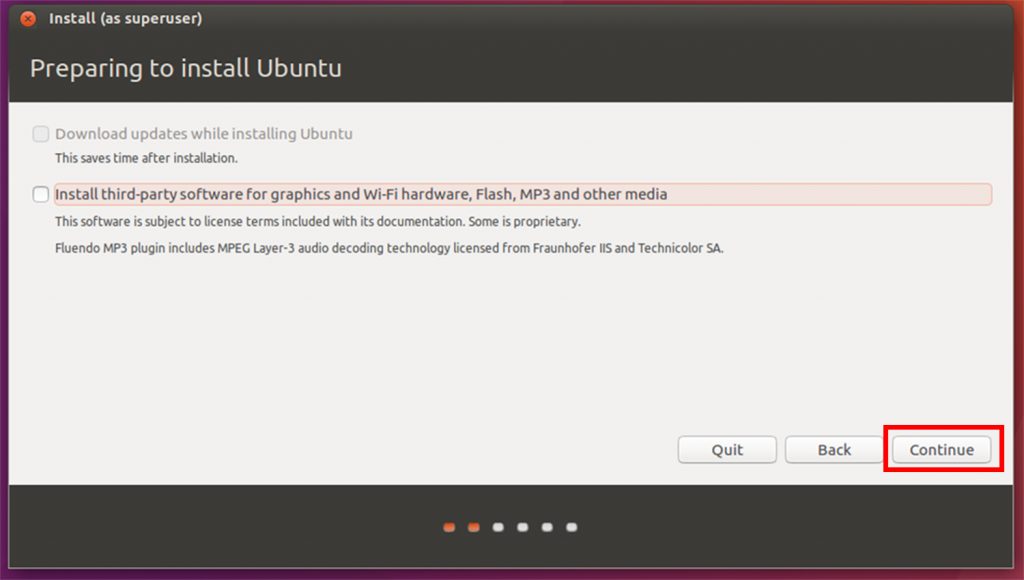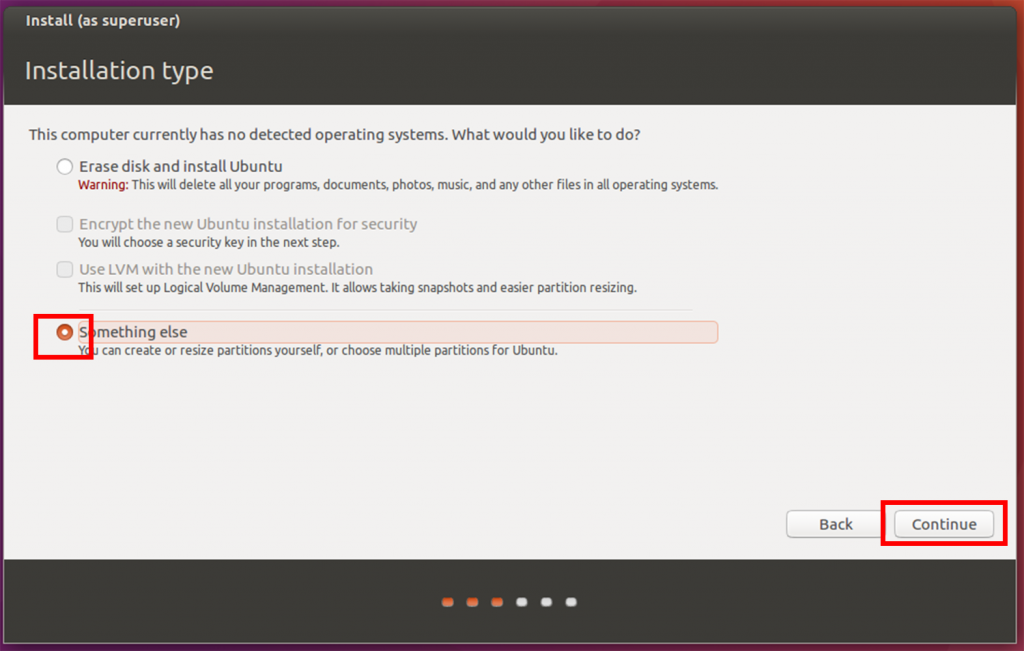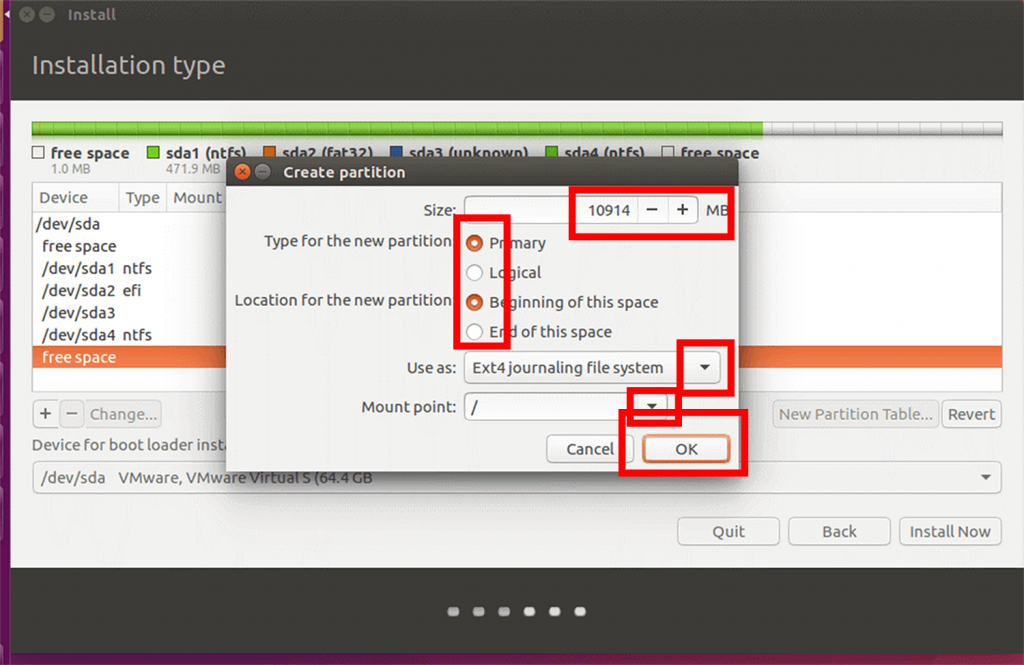Now it’s time to install Ubuntu 16.04 LTS. You can download Ubuntu 16.04 LTS .iso image here.
I recommend you to make back-up first, just in case you’ll mess up with the system. There are numerous articles in the web which tell you how to back-up your system. You can follow the tutorial here.
The next thing you need to do is creating bootable USB drive. I recommend you to use program such as Rufus (UEFI compatible). You can download Rufus from Rufus Website. You can read How to Make USB Bootable with Rufus.
Insert the USB drive or DVD in the appropriate drive, reboot the machine and instruct the BIOS/UEFI to boot-up from the DVD/USB by pressing a special function key (usually F12, F10 or F2 depending on the vendor specifications).
On the Launcher click on the second icon from top, Install Ubuntu 16.04 LTS, and the installer utility will start. Choose the language you wish to perform the installation and click on Install Ubuntu button to proceed further.

Next, if you are not connected to internet or you don’t wish to install third-party software, leave both options from Preparing to Install Ubuntu unchecked and clik on Continue button again.
Note: You can update it after installation process.

Now it’s time to select an Installation Type. You can choose to Install Ubuntu alongside Windows Boot Manager, option that will automatically take care of all the partition steps. Use this option if you don’t require personalized partition scheme. In case you want a custom partition layout, check another option and hit on Continue button to proceed further.
The option Erase disk and install Ubuntu should be avoided on dual-boot because is potentially dangerous and will wipe out your disk.
To do dual booting with Windows 10 I recommend you to choose Something else here:

On this step we’ll create our custom partition layout for Ubuntu 16.04. This guide will recommend you to create two partitions, one for root and the other for home accounts data and no partition for swap (use a swap partition only if you have limited RAM resources or you use a fast SSD).
To create the first partition, the root partition, select the free space (the shrink space from Windows created earlier) and click on the + icon below. On partition settings use the following configurations and click OK to apply changes:

Create the boot partition using this steps as here. The partition settings should look like this:
 Size = at least 20000 MB
Size = at least 20000 MB
Type for the new partition = Primary
Location for the new partition = Beginning
Use as = EXT4 journaling file system
Mount point = /
Create the home partition using the same steps as here. Use all the available free space left for home partition size. The partition settings should look like this:

Size = all remaining free space
Type for the new partition = Primary
Location for the new partition = Beginning
Use as = EXT4 journaling file system
Mount point = /home
Once you are ready with Root, and Home, click on Install Now:
A pop-up window should appear to inform you about swap space. Ignore the alert by clik on Continue button.

Next a new pop-up window will ask you if you agree with committing changes to disk. Click Continue to write changes to disk and the installation process will start.

Well, you have almost done. Next step you will be asked to set username password etc. Basically, you just need to click next now.
Once the installation is completed, restart the computer, you will be welcomed by a purple Grub screen.
Note: The machine will reboot into the Grub menu for ten seconds, you will be asked to choose what OS you wish to use further: Ubuntu 16.04 or Microsoft Windows. Ubuntu is designed as default OS. Thus, just press Enter key or wait for 10 seconds timeout to drain.
Enjoy Ubuntu with Windows 8 in dual boot mode.

Thanks! Very helpful 🙂